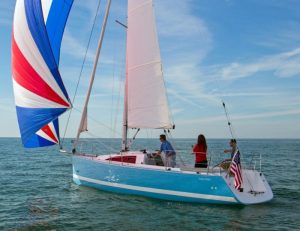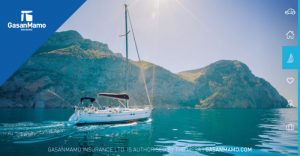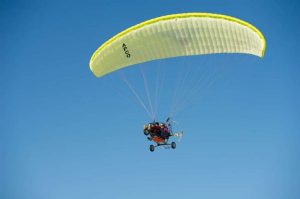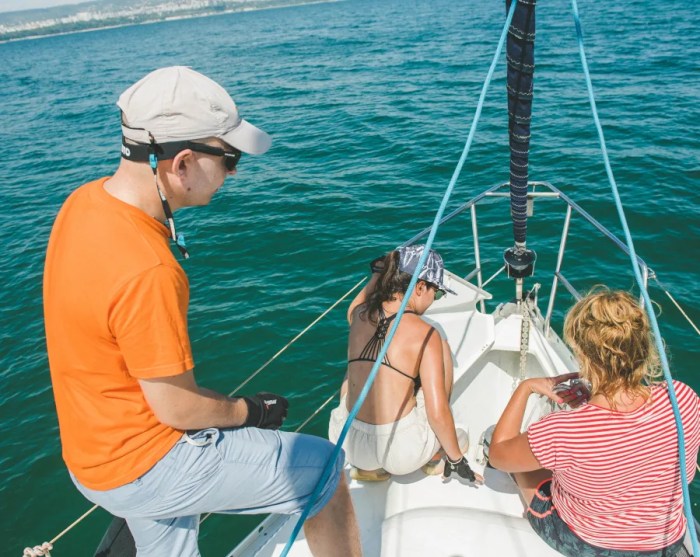
Ahoy, mateys! Ready to dive into the exciting world of sailing courses for beginners? Whether you’re a landlubber looking to navigate the open waters or just seeking a new adventure, this guide has got you covered. From mastering the basics to hoisting the sails, get ready to embark on an unforgettable journey!
Are you prepared to feel the wind in your hair and the sun on your face as you learn the ropes of sailing? Let’s set sail on this exhilarating voyage together!
Overview of Sailing Courses for Beginners
Taking sailing courses for beginners is crucial for anyone looking to embark on a sailing journey. These courses provide the necessary foundation and knowledge to ensure a safe and enjoyable experience on the water. Beginners will learn essential skills and gain confidence in handling a sailboat, making it a rewarding experience for those new to sailing.
Importance of Taking Sailing Courses
Sailing courses for beginners are designed to introduce newcomers to the world of sailing in a structured and safe environment. These courses cover fundamental skills such as boat handling, sail trimming, navigation, and safety procedures. By enrolling in a sailing course, beginners can learn from experienced instructors and gain hands-on experience that will set a solid foundation for their sailing adventures.
Basic Skills and Knowledge Covered
- Boat handling techniques
- Sail trimming and rigging
- Basic navigation and chart reading
- Understanding wind and weather patterns
- Safety procedures and emergency protocols
Taking part in beginner sailing courses will equip novices with the essential skills and knowledge needed to sail confidently and safely on the water.
Benefits of Learning to Sail for Novices
- Increased confidence in handling a sailboat
- Opportunity to connect with nature and the water
- Improved problem-solving and decision-making skills
- Enhanced physical fitness and coordination
- Potential for future sailing adventures and exploration
Learning to sail as a novice opens up a world of possibilities and experiences on the water, making it a valuable skill to acquire.
Choosing the Right Sailing Course
When selecting a sailing course for beginners, there are several factors to consider to ensure you have a positive and enriching learning experience. It is essential to compare different types of sailing courses available for novices and understand the ideal duration and structure that will best suit your needs.
Types of Sailing Courses
- Basic Sailing Courses: These courses cover fundamental sailing techniques, terminology, and safety procedures. They are perfect for beginners with no prior sailing experience.
- Keelboat Courses: Ideal for those interested in learning how to sail larger boats with fixed keels, providing a more stable platform for beginners.
- Catamaran Courses: These courses focus on sailing multi-hull boats, offering a different experience compared to traditional mono-hull sailing.
Duration and Structure
- Short Intensive Courses: These courses are typically shorter in duration, ranging from a few days to a week, providing a quick introduction to sailing basics.
- Longer Progressive Courses: For a more in-depth learning experience, longer courses spread out over several weeks or months allow beginners to build their skills gradually.
- Combination Courses: Some sailing schools offer a combination of theory and practical sessions, providing a well-rounded learning experience for beginners.
Practical Skills Taught in Sailing Courses
Sailing courses for beginners are designed to teach a range of practical skills that are essential for safe and enjoyable sailing experiences. These courses focus on building a solid foundation of knowledge and abilities that can be applied on the water.
Essential Sailing Techniques
- Learning how to rig and de-rig a sailboat
- Understanding the points of sail and sail trim
- Practicing tacking and jibing maneuvers
- Mastering basic knots and rope handling
- Developing boat handling skills in different wind conditions
Safety Measures Covered
- Proper fitting and use of personal flotation devices
- Emergency procedures and communication on the water
- Understanding right of way rules and collision avoidance
- Basic first aid techniques for common sailing injuries
- Weather awareness and how to respond to changes in conditions
Practice and Application
- Practical on-water exercises to apply learned skills
- Simulated scenarios to practice problem-solving in different situations
- Group activities to enhance teamwork and communication skills
- Opportunities for supervised solo sailing to build confidence
- Feedback and debrief sessions to reflect on progress and areas for improvement
Equipment and Gear for Beginner Sailing
As a beginner in sailing courses, it is essential to have the right equipment and gear to ensure a safe and enjoyable experience on the water. Here is a list of necessary gear and their importance for novice sailors:
Sailing Apparel
- Sailing Gloves: Protect your hands from blisters and provide a better grip on ropes.
- Wetsuit or Drysuit: Keep you warm and dry in cold or wet conditions.
- Life Jacket: Ensure safety in case of emergencies and mandatory to wear at all times.
Sailing Equipment
- Sailing Shoes: Provide traction on slippery surfaces and protect your feet.
- Sailing Helmet: Protect your head from impact during rough conditions or maneuvers.
- Sailing Knife: Essential for cutting ropes in emergencies or to free entangled lines.
Maintenance and Care Tips
Proper maintenance of your sailing gear is crucial for its longevity and functionality. Here are some tips to help you care for your equipment:
- Rinse your gear with fresh water after each use to remove salt and dirt.
- Store your gear in a dry and ventilated area to prevent mold and mildew growth.
- Check for any damage or wear and tear regularly and repair or replace as needed.
Sailing Etiquette and Rules
Sailing etiquette and rules are essential for beginners to ensure safety, respect, and a smooth sailing experience on the water. Understanding and following these guidelines will help you navigate waters confidently and courteously.
Common Rules and Regulations
- Always give way to larger vessels and boats under sail. This means that powerboats should yield to sailboats, and sailboats should yield to larger vessels.
- Keep a safe distance from other boats, buoys, and markers to avoid collisions.
- Observe right of way rules, such as avoiding crossing in front of other boats and giving way to vessels on your starboard side.
- Follow speed limits in designated areas and respect no-wake zones to protect wildlife and other boaters.
- Be mindful of environmental regulations and dispose of trash properly to keep the waters clean.
Tips for Safe and Courteous Sailing
- Communicate with hand signals and sound signals to indicate your intentions to other sailors.
- Stay aware of your surroundings and be prepared to adjust your course to avoid potential hazards.
- Respect the peace and quiet of sailing areas by keeping noise levels to a minimum.
- Learn and use the proper sailing terminology to effectively communicate with other sailors and boaters.
- Always be prepared for changing weather conditions and have a plan in place for emergencies.
Sailing Terminology for Beginners

Understanding basic sailing terminology is crucial for beginners to communicate effectively and navigate the waters safely. By familiarizing yourself with common sailing terms, you will enhance your learning experience and feel more confident on the water.
Windward and Leeward
- Windward: Refers to the direction from which the wind is blowing. Sailing close to the windward side of the boat can help increase speed.
- Leeward: The opposite of windward, it is the direction away from which the wind is blowing. Sailing on the leeward side can provide a smoother ride.
Tacking and Jibing
- Tacking: A maneuver where the boat changes direction by turning the bow through the wind. This is done to sail in the opposite direction while utilizing the wind effectively.
- Jibing: Similar to tacking, but involves turning the stern of the boat through the wind. Jibing is used when changing the boat’s direction downwind.
Points of Sail
- Close-Hauled: Sailing as close to the wind as possible without losing speed.
- Beam Reach: Sailing perpendicular to the wind, with the wind coming from the side of the boat.
- Broad Reach: Sailing with the wind coming from behind the boat at an angle.
- Running: Sailing directly downwind, with the wind coming from behind the boat.
Boom and Sheets
- Boom: The horizontal pole attached to the bottom of the mainsail, used to control the sail’s position.
- Sheets: Lines used to control the angle of the sails in relation to the wind. The main sheet controls the mainsail, while the jib sheet controls the headsail.
Real-Life Experiences from Beginner Sailing Courses
Join us as we delve into the exciting world of beginner sailing courses through the eyes of individuals who have embarked on this thrilling journey. Discover the challenges they faced, the triumphs they celebrated, and the unforgettable moments that shaped their sailing experience.
Personal Testimonials
- One student, Sarah, shared how she initially struggled with understanding wind direction and sail trimming. However, with the patient guidance of her instructor, she gradually mastered these skills and felt a sense of accomplishment.
- Another participant, David, recalled the exhilarating feeling of steering a sailboat for the first time. He described it as a moment of pure freedom and connection with the water that he would never forget.
Challenges and Triumphs
- Many beginners faced challenges with docking maneuvers and navigating in crowded waters. Through practice and perseverance, they overcame these obstacles and gained confidence in their abilities.
- Some novice sailors shared how they initially struggled with coordinating their movements with the changing wind conditions. With time and experience, they developed a better understanding of sail control and responsiveness.
Memorable Moments
- For some participants, the highlight of their sailing course was successfully completing their first solo sail. The sense of independence and self-reliance they felt was a defining moment in their sailing journey.
- Others cherished the camaraderie and teamwork fostered during group exercises on the water. Building connections with fellow sailors and sharing the joy of learning together created lasting memories.
Introduction to Cycling & Bikepacking Travel
Bikepacking is a unique and exciting way to combine cycling with travel, offering adventurers the opportunity to explore new destinations while enjoying the thrill of the ride. Unlike traditional cycling, bikepacking involves long-distance cycling trips where riders carry all their gear on their bikes, allowing them to venture off the beaten path and immerse themselves in the journey.
Benefits of Cycling & Bikepacking Travel
Embarking on a cycling or bikepacking trip can provide a multitude of benefits for adventure enthusiasts, including:
- Opportunity to explore remote and scenic locations that are inaccessible by car
- Physical exercise and the chance to challenge oneself both mentally and physically
- Freedom to travel at your own pace and immerse yourself in the local culture
- Cost-effective way to travel and reduce your carbon footprint
Tips for Planning a Cycling or Bikepacking Trip for Beginners
Planning a cycling or bikepacking trip for the first time can seem daunting, but with the right preparation, it can be a rewarding experience. Here are some tips for beginners:
- Start with shorter day trips to build endurance and confidence on the bike
- Invest in essential gear such as a comfortable bike, helmet, repair kit, and panniers for storage
- Research your route and familiarize yourself with the terrain, weather conditions, and local amenities
- Pack light and only bring the essentials to avoid carrying unnecessary weight
- Stay hydrated, well-fed, and be prepared for unexpected challenges along the way
Road Trips & Van Life Travel
Road trips and van life have become increasingly popular among travelers looking for freedom, flexibility, and adventure on the open road. Whether exploring national parks, coastal highways, or off-the-beaten-path destinations, hitting the road in a van offers a unique way to experience the world.
Converting a Van for Travel
Converting a van into a livable space for travel requires careful planning and consideration. Essential amenities to include in your van conversion may include a bed, storage space, cooking facilities, a portable toilet, and power sources such as solar panels or a secondary battery system. Customizing your van to suit your travel needs and lifestyle is key to maximizing comfort and convenience on the road.
Planning a Successful Road Trip or Van Life Journey
- Research and plan your route in advance, considering key destinations, attractions, and accommodations along the way.
- Pack essentials such as clothing, food, water, first aid kit, navigation tools, and emergency supplies.
- Budget for fuel, food, accommodation, and activities to ensure a stress-free journey.
- Stay flexible and open to unexpected discoveries and detours that may enhance your travel experience.
- Prioritize safety by following traffic laws, practicing safe driving habits, and securing your belongings while on the road.
Rock Climbing Travel
Rock climbing as a travel activity offers a unique blend of adrenaline, physical challenge, and breathtaking scenery. It allows travelers to explore stunning natural landscapes while pushing their limits and conquering new heights.Popular rock climbing destinations around the world include:
Popular Rock Climbing Destinations
- Yosemite National Park, USA: Renowned for its iconic granite cliffs and challenging routes.
- Kalymnos, Greece: A paradise for sport climbers with a variety of limestone cliffs overlooking the Aegean Sea.
- Joshua Tree National Park, USA: Known for its unique rock formations and diverse climbing opportunities.
- Fontainebleau, France: A bouldering mecca with countless sandstone boulders scattered throughout the forest.
Safety tips and gear recommendations for travelers interested in rock climbing:
Safety Tips and Gear Recommendations
- Always climb with a partner and double-check each other’s safety equipment.
- Wear a climbing helmet to protect your head from falling rocks or potential impacts.
- Invest in proper climbing shoes with good grip and support to enhance your performance on the rock.
- Carry a first aid kit and familiarize yourself with basic rescue techniques in case of emergencies.
- Stay hydrated, fuel your body with nutritious snacks, and listen to your body’s signals to prevent fatigue and injuries.
Extreme Sports Travel
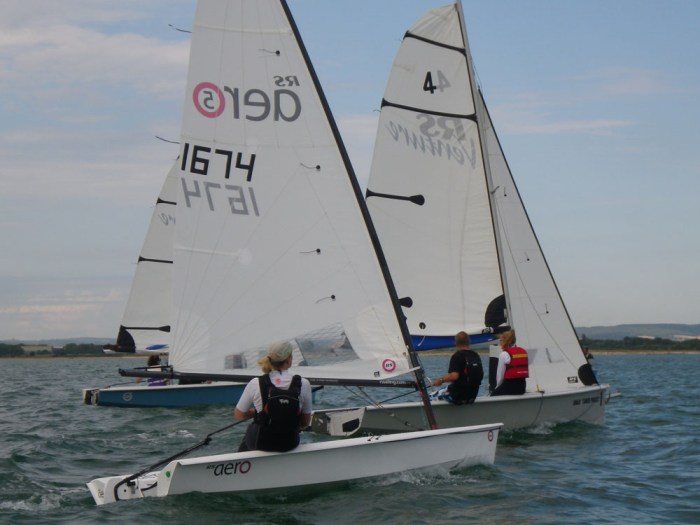
Embark on a thrilling journey into the world of extreme sports travel, where adrenaline-pumping activities await adventurous travelers seeking an unforgettable experience.
Skydiving in Interlaken, Switzerland
Interlaken, Switzerland, is a renowned destination for skydiving enthusiasts, offering breathtaking views of the Swiss Alps as you freefall from thousands of feet above the ground. The adrenaline rush of jumping out of a plane and soaring through the sky is an experience like no other.
Bungee Jumping in Queenstown, New Zealand
Queenstown, New Zealand, is known as the adventure capital of the world, and bungee jumping is a popular extreme sport activity here. Take the plunge from the Kawarau Bridge or the Nevis Bungy, and feel the rush of adrenaline as you freefall towards the stunning landscapes below.
Rock Climbing in Krabi, Thailand
For rock climbing enthusiasts, Krabi in Thailand offers limestone cliffs and stunning coastal views, making it a prime destination for those seeking a challenging and exhilarating climbing experience. Scale the vertical walls and cliffs, and marvel at the beauty of the surroundings from above.
White-Water Rafting in Costa Rica
Costa Rica is a paradise for white-water rafting enthusiasts, with its lush rainforests and raging rivers providing the perfect setting for an adrenaline-fueled adventure. Navigate through challenging rapids and cascading waters, surrounded by the natural beauty of the Costa Rican landscape.
Sailing & Boating Travel
Sailing and boating travel offer a unique and exhilarating experience for water enthusiasts. Whether you are a beginner or an experienced sailor, exploring destinations by boat provides a sense of freedom and adventure like no other mode of travel.
Benefits of Sailing and Boating Travel
- Immerse yourself in the beauty of nature from a different perspective, surrounded by the vastness of the open water.
- Experience a sense of tranquility and relaxation as you sail away from the hustle and bustle of everyday life.
- Opportunity to discover secluded coves, hidden beaches, and remote islands that are only accessible by boat.
- Enhance your sailing skills and knowledge while enjoying the thrill of navigating the waters.
Recommended Sailing and Boating Travel Destinations
- The Caribbean: Ideal for beginners with its calm waters, steady winds, and breathtaking scenery.
- The Mediterranean: Explore historic ports, picturesque villages, and crystal-clear waters in this sailing paradise.
- New Zealand: Perfect for more experienced sailors looking for challenging conditions and stunning landscapes.
- Croatia: Sail along the Dalmatian coast, visiting medieval towns, ancient ruins, and vibrant local markets.
Final Wrap-Up
As we dock our sailing adventure, remember that the sea is calling and the wind is always in your favor. With newfound skills and a passion for sailing, you’re ready to chart your course towards endless horizons. Fair winds and following seas, sailor!
User Queries
What are the key benefits of taking sailing courses as a beginner?
Learning sailing basics, safety measures, and gaining practical skills while enjoying the thrill of the open waters.
How do I choose the right sailing course tailored for beginners?
Consider factors like course duration, structure, and the types of skills covered to find the perfect fit for your sailing journey.
What equipment and gear are essential for beginners in sailing courses?
Basic equipment includes life jackets, sails, and ropes, each playing a crucial role in your sailing experience.
Why is understanding sailing etiquette and rules important for beginners?
Adhering to sailing rules ensures safety on the waters and promotes a respectful sailing community for all enthusiasts.
How can beginners apply their newly acquired sailing skills in real-life experiences?
By sharing personal stories and testimonials, beginners can see how challenges are overcome, and memorable moments are created during their sailing journey.

